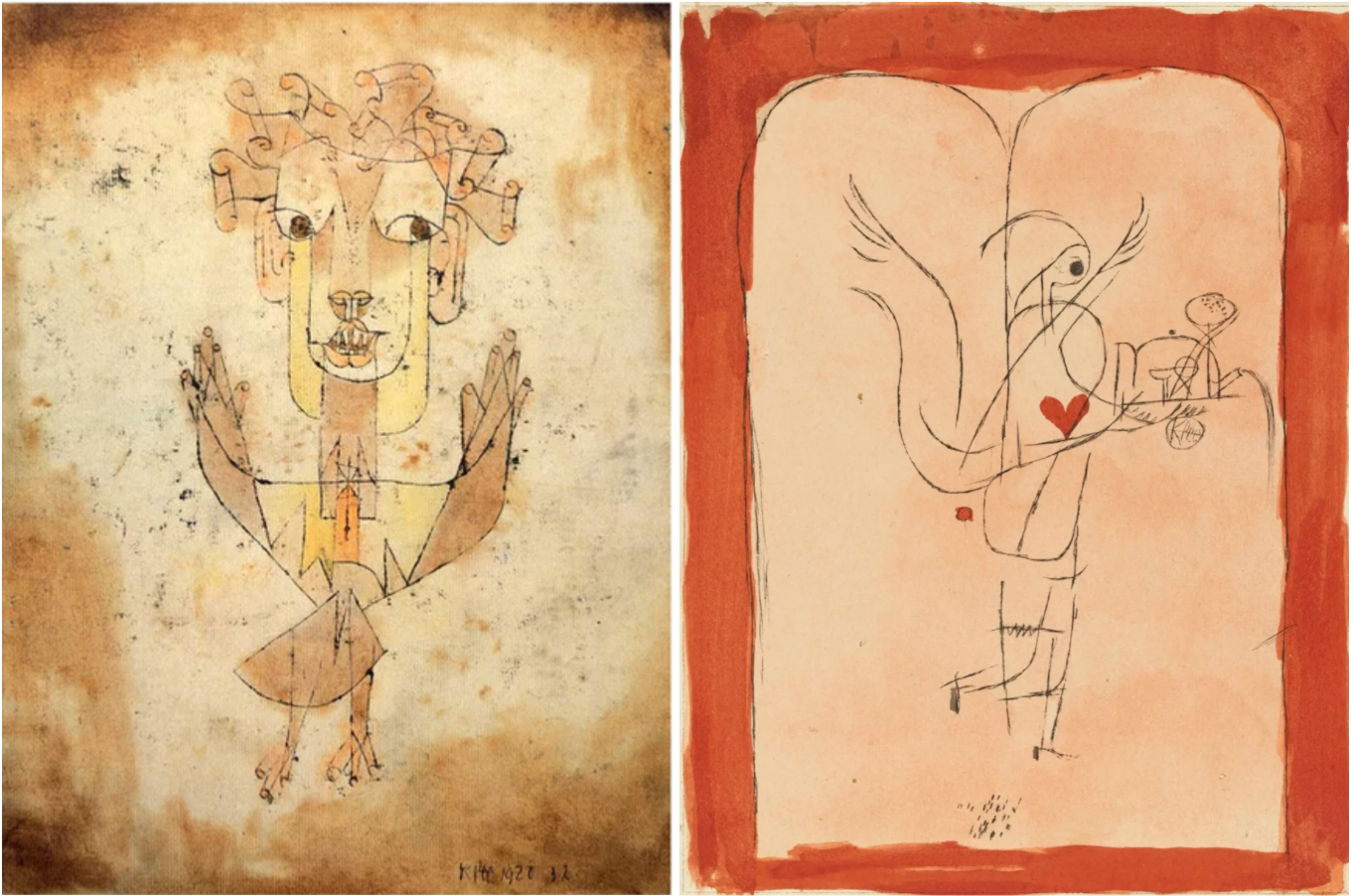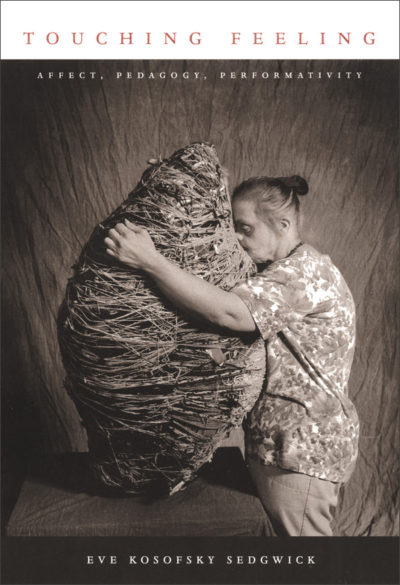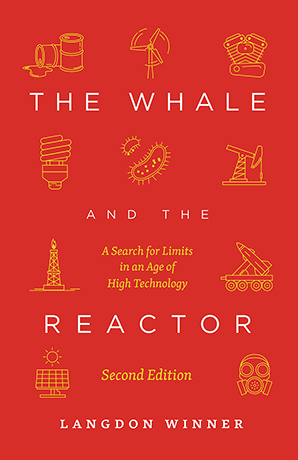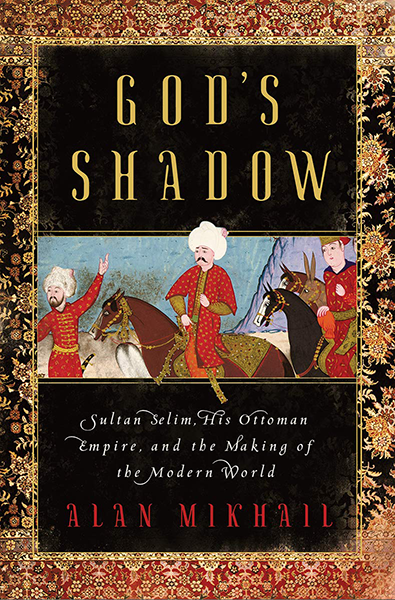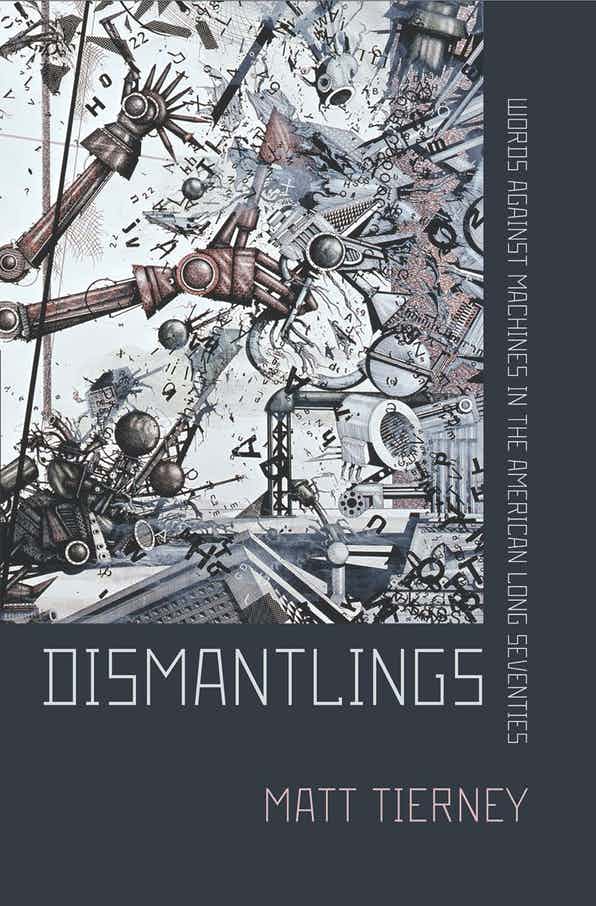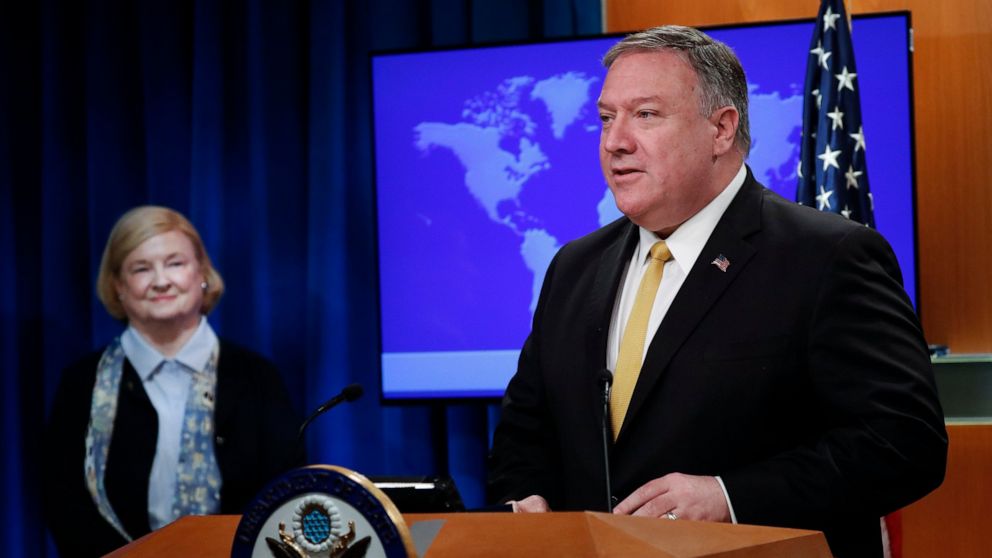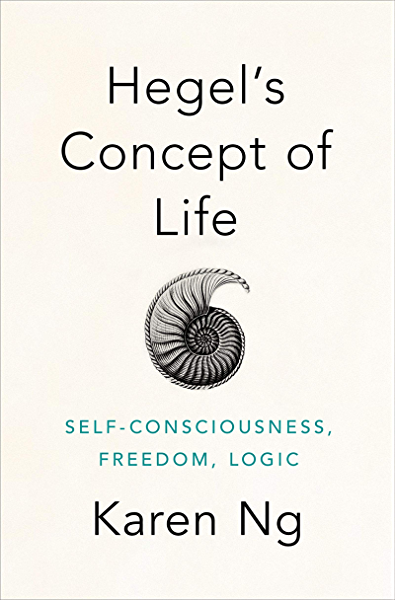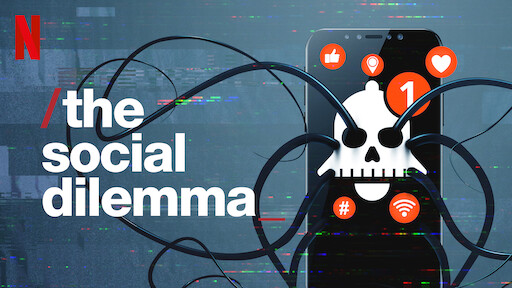This essay is a part of the COVID-19 dossier, edited by Arne De Boever.
by Eric Reinhart
The tradition of the oppressed teaches us that the “state of emergency” in which we live is not the exception but the rule. We must attain to a conception of history that is in keeping with this insight. Then we shall clearly realize that it is our task to bring about a real state of emergency, and this will improve our position in the struggle against Fascism. One reason why Fascism has a chance is that in the name of progress its opponents treat it as a historical norm. The current amazement that the things we are experiencing are “still” possible in the twentieth century is not philosophical. This amazement is not the beginning of knowledge—unless it is the knowledge that the view of history which gives rise to it is untenable. — Walter Benjamin, Thesis VIII from “On the Concept of History”
I speak, precisely, of “messianicity without messianism”… a certain messianic destitution, in a spectral logic of inheritance and generations, but a logic turned toward the future no less than the past, in a heterogeneous and disjointed time. — Jacques Derrida, “Marx & Sons” (250) and, after the ellipsis, Specters of Marx (181)
Over the last year, a new biopolitical sense in which emergency is rule and cellular being ties each of us to an inescapable collectivity has spread across much of the planet. From rural Bihar to Manhattan, this emergent spatio-temporality has mobilized unprecedented collective action—albeit not without resistance—under conditions of a pandemic. In our best moments, it has corresponded to a condensation of urgency and relationality in a fledgling sense of ourselves as a biomassive body politic, what we could call a state of pandemicity. As economies flail, billionaires multiply their fortunes, states struggle to quell surging discontent, and popular political imaginations become bolder in their defiance of racially overdetermined threats to life at the hands of virus, economic precarity, and police, the solidity of the global racial-capitalist order is widely being put into question. If the sudden suspension of routine imposed by a virus has awakened us to political possibilities and to others that formerly felt so far away, perhaps this nascent phenomenon of pandemicity could endure beyond the pandemic. Could we sustain a state of pandemicity without pandemic?
This is an echo of Jacques Derrida’s notion of “messianicity without messianism,” which embraces the form of religious intensity and urgency attached to divine justice while refusing to fill it in with positive content, insisting instead on limitless responsibility and openness to otherness. But pandemicity without pandemic also challenges the abstract purity of Derrida’s deconstructive ethics; it insists on looping his notion of responsibility back through what were for Derrida the “too Heideggerian, too messianico-Marxist or archeo-eschatological” (2001: 298) desires of Walter Benjamin in order to bring the ethical demand of the other into a knot with our urgent material present.
In his response to critics of Specters of Marx, Derrida marks a difference between his own concept of messianicity without messianism and the way in which Benjamin’s “weak messianic power” is linked to “determinate historical-political phases, or indeed, crises” (1999: 253). “In my view,” Derrida writes, “the universal, quasi-transcendental structure that I call messianicity without messianism is not bound up with any particular moment of (political or general) history or culture” (254). On the other hand, Derrida emphasizes in Specters that the possibility of justice is tied to “anachronic disjointure,” “the very coming of the event,” and “the very condition of the present and of the presence of the present” (33). He observes, via Marx, that historical “rupture produces the institution or the constitution, the law itself… violence that interrupts time, disarticulates it, dislodges it, displaces it out of its natural lodging: ‘out of joint’” (37). Différance unfurls in the “here-now” without lateness or delay, in imminence and in urgency; as justice, it “does not wait” (37).[1] These are not situated historical statements, but it is hard to imagine that they do not necessarily implicate historical specificity—if only for historical time’s interruption—in order to obtain any political traction or effect.
There is a deconstructive logic subtending Derrida’s argument against linking messianicity without messianism to historical-political moments.[2] To index messianicity to historical-material specificity would be to “reduce the event-ness of the event, the singularity and alterity of the other” and risk reducing justice “once again to juridical-moral rules, norms, or representations, within an inevitable totalizing horizon (movement of adequate restitution, expiation, or reappropriations)” (1994: 33-34). Derrida’s objections to Benjamin’s historical materialism are thus not reflective of a lack of concern for violence against others. Instead, they support a delicate care for an other kept at a protective distance in a thinking that is characteristically principled—the hallmark of deconstructive ethics.[3] But Derrida acknowledges that Benjamin’s historically grounded argument “makes sense, at least, given the political context and the date of his essay (the Hitler-Stalin pact at the beginning of the war)” (1999: 253). In 1993 and 1999, however, Derrida published Specters and “Marx & Sons” from a rather different position: within the comfort of American and French universities during what might be hesitantly called, at least from a Euro-American vantage, the inter-historical decade after “the end of history” and before the violent reassertion of history’s discontents in 2001.[4]
Today, without comparison to the position of Benjamin amidst violence that remains beyond logics of commensurability, we find ourselves in another irruptive moment of world-seizing destruction in which there is again an immediate demand to suspend the purity of deconstructive arguments by venturing pragmatic, determinate interventions linked to a historical materialism with positive content. The political temporality ventured here returns, as is only now possible by way of Derrida, to Benjamin’s historical-materialist weak messianic power and his recasting of the state of emergency through the tradition of the oppressed. It is in this spirit that I have joined many during this pandemic in devoting myself to immediately applied work tethered to a pragmatic ethics of effect that draws on specific empirical grounds—in my case, US policing and carceral policy as key drivers of Covid-19’s destructive spread through marginalized neighborhoods and the public at large—in an effort to recall and redeploy both Benjamin and Derrida together towards a strategy of pandemicity without pandemic.[5]
In such a conjunction of empirical science and the political-ethical claims of a thinking that would reach to a beyond of the world as it is, we must hold onto deconstruction’s ethical resistance to self-assured positivist logics and its insistent appeal to difference—to that which is other to the knowable and sayable. To be faithful to this ethical imperative and to protect the space of its possibility demands a perpetual oscillation between Benjamin’s insistence of operating “within the measure of the possible”—conceivable political-material acts that insist on now-time—and Derrida’s emphasis on the impossible of différantial ethics: a cycling between the grounded political act and a genuine thinking at the edge of the known and knowable, each preparing a way for the other.
Pandemicity and Weighted Time
What is pandemicity? I am repurposing this term from its invocations in epidemiological literature. In articles such as “What Is a Pandemic?” by Anthony Fauci and his infectious disease colleagues, for example, “pandemicity” appears in passing to denote the arrival of an epidemiological state of pandemic—a state only achieved when certain geographical and temporal thresholds are exceeded in the spread of a previously contained epidemic.[6] Pandemicity thus inaugurates the state of a pandemic’s being and, from the human perspective, the state of being through or subject to a pandemic. It is to this latter resonance that I am appealing: pandemicity as the collective state of social-political being that has recently irrupted and subsumed large swaths of the world at an unprecedented scale and pace.
What is distinctive about this state beyond its collectivity is its temporality. Pandemicity is, at its core, an awareness of our social lives and organismic being as urgently enmeshed in global biosocial dynamics. The immanent and imminent threat of infection multiplies exponentially if not checked, threatening a runaway scenario beyond any human capacity to control—an infection curve that morphs into a straight, vertical line. Every wasted moment compounds, promising accelerations of disease and death. This exponential temporality has widely installed––although, clearly, not in all––a common biopolitical consciousness and has mobilized collective (in)action at a unprecedented scale: over the last year, well over half the world’s population has accepted varying degrees of deprivation to confine themselves for indefinite periods of time. As a result of this pandemic demobilization, we have become aware of ourselves as part of a planetary body, a common biomass—still hierarchized and differentially at risk, certainly, but nonetheless part of a biological network from which we cannot escape membership. In this new sociality under the collectivizing temporality of pandemicity, the body of the other has become both more other and more intimate than ever. It constantly threatens to transgress its boundaries and multiply into our own cellular constitution by passing through the air upon which we all depend for breath––a breath haunted by images of police murders irrupting out of slow structural violence against Black Americans illustrative of how this air is systematically and sadistically denied to so many across the globe.
We have acquired a mutual awareness far beyond that which any voluntaristic humanitarian project has ever achieved. Under pandemicity, an increasing number of people suddenly suffer from an incapacity to disavow the being of the other, even those others who had heretofore been so easily consigned to disposability.[7] We are literally plagued by the other and forced into confrontation with the historical-material inequalities that render some bodies especially vulnerable, and in so doing, ultimately render us all biomassively at risk.
Might these suddenly organized, transnational billions represent a new political horizon? It is with this thought that pandemicity appears as that which could offer a political ethos that, if it is to be sustained, cannot depend upon the presence of a pandemic for its mobilization.
Now-Time: The Temporal Convergence of Symptoms
Pandemicity without pandemic is an echo of the political-ethical appeal of messianicity without messianism that seeks to maintain fidelity to Derrida’s demand for justice in the here-now by attempting to ground it in our historical-political present.[8] It insists upon a historical-materialist conceptualization of the present that acknowledges and dismantles dominant humanitarian ideologies of activity-as-busyness, aid, and infantilized-racialized others—frames that reproduce neocolonial structural relations between North and South. In its conjunction with historical-materialism and the viral body, pandemicity without pandemic thus both affirms and differs from Derrida’s formulation of messianicity without messianism and its critique of logocentrism; it resists the temptations of paralysis that often arise from the quasi-transcendental-religious structure of messianicity, différance, the promise, and the event that is always yet to come.
Pandemicity without pandemic stresses instead the active immediacy of the always-already in Benjamin’s recognition of the emergency as rule rather than exception. We are always already late arriving on the scene, compelled to confront an accumulated force of violence that began inflicting devastation before we managed to take notice. The catastrophe is not looming. It has already arrived, and we are it. It is not specter, but flesh—our own bodies circulating in the rapid networks that we have established and enforced to accumulate to ourselves wealth, knowledge, and the bodies and time of others.
A pandemic has irrupted from the world we have made, but it is, from the tradition of the oppressed, only an extension of an always-already-unfolding catastrophe of deprivation and death. It has been declared exceptional, and in many ways it is, but for tens of thousands of people who die from completely preventable disease of poverty every day under conditions that constitute the “normal” to which we can now only fantasize about returning, the catastrophe of the present is in keeping with the rule that has long governed.[9] The difference is that a now-generalized pandemic reality has ruptured the smooth surface of the sea in which the suffering of the oppressed has been submerged, hidden from view and drowned out by the commerce and comfort that sails above. The indiscrimination of viral replication and the peculiar terror of our aerosolized cells mean that today we cannot help but see—even if some persist in violently refusing this truth that demands responsibility—the bodies upon which we have for so long supported our own segregated world.
Pandemicity calls for an ethics of action-oriented urgency that is responsive to the exponentially-weighted now—the multiplication of death in the spacing of time—that cannot accept delay.[10] What messianicity and pandemicity hold in common is a sense of apocalyptic urgency; what they compel is the total struggle for life that seizes us when breath itself is threatened. The final words of Eric Garner and George Floyd—”I can’t breathe”—as they were violently murdered must haunt and hover over the time of those of us who remain, and in whom the power of the act endures and cannot be deferred. In a historical present when breathlessness has become the symptom par excellence of racial violence, a viral pandemic, and the darkening blood-red noonday summer skies of ecological devastation aflame, we must renew an insistence on thought tethered to action in the massive now-time upon which everything—past, present, future; life, death—rests but does not wait.
Eric Reinhart is a PhD candidate in Anthropology at Harvard, MD candidate at the University of Chicago, and an advanced candidate at The Chicago Center for Psychoanalysis. His doctoral research traces the constitutive interrelation between modern psychiatric, racial, and aesthetic ideas from their shared origin in 18th-century German anthropology to their consequences for everyday practices and US political formations today. He is also Lead Health & Justice Researcher with Data and Evidence for Justice Reform (DE JURE) at The World Bank, where he focuses on carceral-community epidemiology, systemic prejudice, and criminal punishment systems both in the United States and internationally. His work has appeared in The New York Times, The Wall Street Journal, Health Affairs, The British Medical Journal, and Jacobin Magazine.
Works Cited
*Barsky, Benjamin; *Reinhart, Eric; Keshavjee, Salmaan; and Farmer, Paul. “Vaccination in Jails and Prisons Is Not Enough: The Need for Adjunctive Decarceration.” Forthcoming.
Benjamin, Walter. “On the Concept of History” in Walter Benjamin: Selected Writings, Volume 4: On the Concept of History, Writings 1938-1940. Edited by Howard Eiland and Michael Jennings. Cambridge: Harvard University Press, 2003.
Borradori, Giovanna. Philosophy in a Time of Terror: Dialogues with Jurgen Habermas and Jacques Derrida. Chicago: University of Chicago Pres, 2004.
Derrida, Jacques. “Force of Law: The ‘Mystical Foundation of Authority’” in Acts of Religion. Edited by Gil Anidjar. New York and Lond: Routledge, 2001.
_____. “Marx & Sons” in Ghostly Demarcations: A Symposium on Jacques Derrida’s Specters of Marx. Edited by Michael Sprinker. London and New York: Verso, 1999.
_____. “Psychoanalysis Searches the States of Its Soul” in Without Alibi. Edited and translated by Peggy Kamuf. Stanford University Press, 2002.
_____. Resistances of Psychoanalysis. Translated by Peggy Kamuf, Pascale-Anne Brault, and Michael Naas. Stanford: Stanford University Press, 1998.
_____. Specters of Marx: The State of the Debt, the Work of Mourning & the New International. Trans. Peggy Kamuf. New York and London: Routledge, 1994.
Fanon, Franz. The Wretched of the Earth. Translated by Richard Philcox. New York: Grove Books, 2005.
Fukuyama, Francis. The End of History and the Last Man. Simon and Schuster, 2006.
Heidegger, Martin. “The Origin of the Work of Art” in Off the Beaten Track. Edited and translated by Julian Young and Kenneth Haynes. Cambridge: Cambridge University Press, 2002.
Khan, Azeen. “Aneconomy, Indirection, Undecidability: Derrida’s ‘Principled’ Critique of the Death Drive” differences: A Journal of Feminist Cultural Studies 2020 31(1): 135-162.
Khanna, Ranjanna. “Disposability.” differences: A Journal of Feminist Cultural Studies 2009 20(1): 181-198.
Morens DM, Folkers GK, Fauci AS. “What is a pandemic?” The Journal of Infectious Diseases (2009)200(7):1018-1021.
Reinhart, Eric and Alam, Eram. “The neocoloniality of who cares: US underinvestment in medical education exacerbates global inequities.” The British Medical Journal (BMJ) 2020;371:m4293.
Reinhart, Eric and Brauner, Daniel. “A critique of clinical economy: reassessing value and care during covid-19” The British Medical Journal (BMJ) 2020;370:m2878.
Reinhart, Eric and Chen, Daniel. “Epidemiological Consequences of Jail Cycling in Marginalized Communities: Mass Incarceration and Structural Racism during Covid-19.” Forthcoming.
_____. “Effects of Jail Decarceration and Anti-Contagion Policies on Covid-19 in the United States.” Forthcoming.
_____. “Incarceration And Its Disseminations: COVID-19 Pandemic Lessons From Chicago’s Cook County Jail” Health Affairs 39, No. 8 (August 2020): 1412-1418
Reinhart, Eric. “Essential and Disposable: Covid Labor, Race, and Structural Misogyny.” Forthcoming.
Reinhart, Eric. “Politicizing Public Health: More Please.” Forthcoming.
Reinhart, Eric. “Stop Unnecessary Arrests to Slow Coronavirus Spread.” The New York Times. July 2 (online) and July 6 (print), 2020.
Richardson, Eugene. “Pandemicity, COVID-19 and the limits of public health ‘science’” BMJ Global Health. 2020 Apr 1;5(4):e002571.
Rottenberg, Elizabeth. For the Love of Psychoanalysis: The Play of Chance in Freud and Derrida. New York: Fordham University Press, 2019.
UNICEF. Levels and Trends in Child Mortality. United Nations Inter-Agency Group for Child Mortality Estimation (UN IGME), Report 2020. Available at https://data.unicef.org/resources/levels-and-trends-in-child-mortality/.
World Health Organization. “Children: Improving Survival and Well-Being.” WHO Fact Sheets. 8 September 2020. Available at https://www.who.int/news-room/fact-sheets/detail/children-reducing-mortality.
[1] As Derrida famously declares, différance “responds without delay to the demand of justice. The latter by definition is impatient, uncompromising, and unconditional. No différance without alterity, no alterity without singularity, no singularity without here-now” (1994: 37).
[2] This historical-determinate resistance—that which Derrida’s most direct intellectual forebearer, Heidegger, so disastrously failed to heed by lending his early support to a National Socialism that he imagined he could shape—is how Derrida guards against the assignation of historically delimitable content to the other and to a fixed concept of justice that would then risk resting it “on the good conscience of having done one’s duty [such that] it loses the chance of the future, of the promise or the appeal, of the desire also (that is its ‘own’ possibility)” (1994: 33).
[3] And this spirit of a rigorous deconstructive ethics we must keep alive as a horizon (or what Heidegger calls ‘Earth’ in “The Origin of the Work of Art,” for example) beyond our known worlds and beyond metaphysics. At the same time, we must insist upon an active responsibility in the here-now in order to follow deconstructive mandates in determinate action and not in theory, even a decisionist theory, alone.
For a recent elaboration of the stakes of Derrida’s “principled” critique, see Azeen Khan’s “Aneconomy, Indirection, Undecidability: Derrida’s ‘Principled’ Critique of the Death Drive” in differences (2020).
[4] The decade spanning 1991 to 2001 might be thought as a certain historical extreme in modernity in precisely its relative non-historicality. This decade follows Fukuyama’s “end of history” triumph of capitalism and precedes history’s violent return to Euro-American consciousness aboard four jetliners in 2001. It is a decade in which the major international conflicts were what Frantz Fanon described as “internecine feuds” in “On Violence” in The Wretched of the Earth—conflicts like the Rwandan genocide and the Balkan conflagrations fought on the ground of ethnic, regional struggles for domination of one subordinated group over another, but without a conflict over clearly competing conceptions of history, reason, or progress that were used as explicit justifications for the Cold War and the neocolonial energies asserted over the postcolonial world in the wake of formal decolonization. Derrida’s historical-determinate resistance might be thought, to some degree, to be a symptom of this inter-historical decade. His abstention from historical content, for example, quickly fades following 2001; see, for example, his interview in Philosophy in a Time of Terror (2004).
[5] For example, see my research in Health Affairs with Daniel Chen: “Incarceration And Its Disseminations: COVID-19 Pandemic Lessons From Chicago’s Cook County Jail.” Related research remains ongoing in several forthcoming quantitative public health research articles on both US and international contexts. For an explanation of our initial study’s immediate policy implications, crafted with uneasy compromises in search of maximum practical effect amidst American political reality, see my short essay in The New York Times, “Stop Unnecessary Arrests to Slow Coronavirus Spread.” Further efforts to mobilize the emergent present towards a post-pandemic future rearranged by an enduring pandemicity are reflected in my other recent attempts that focus on politics, social medicine, and global health: “A critique of clinical economy: reassessing value and care during covid-19”; “The neocoloniality of who cares: US underinvestment in medical education exacerbates global inequities”; and “Politicizing Public Health: More Please” and “Essential and Disposable: Covid Labor, Race, and Structural Misogyny” (both forthcoming).
[6] Morens DM, Folkers GK, Fauci AS. “What is a pandemic?” The Journal of Infectious Diseases (2009)200(7):1018-102. After drafting the present essay in March 2020, I came upon Eugene Richardson’s closely related appropriation of the term pandemicity in his recent commentary in BMJ Global Health, “Pandemicity, COVID-19 and the limits of public health ‘science.’”
[7] See Ranjanna Khanna’s essay “Disposability” in differences.
[8] For Derrida, it is together with psychoanalysis, and particularly its emphasis on an engagement with the alterity of unconscious processes, that deconstructive thought most forcefully compels action in the face of autoimmunity and the ineradicable hauntological violence of the death drive. This deserves fuller elaboration than brief commentary here allows; it is, however, important to my suggestion that Benjamin’s historical-materialism requires the supplement of psychoanalytic deconstructive thought in order effectively account for and respond to manifest violence and cruelty. For a selection of texts upon which I am relying in this claim, see Derrida’s essays in Resistances of Psychoanalysis (1998) and “Psychoanalysis Searches the States of Its Soul” in Without Alibi (2002). Also see work by two analyst-scholars: Elizabeth Rottenberg’s For the Love of Psychoanalysis (2019) and Azeen Khan’s “Aneconomy, Indirection, Undecidability: Derrida’s ‘Principled’ Critique of the Death Drive” (2020). I thank Alan Bass for emphasizing the importance of acknowledging Derrida’s psychoanalytic positions in order to make clear why deconstruction remains an indispensable supplement to historical-materialist ethical discourses.
[9] See, for example, this report on the 10,000 daily preventable deaths of children in the Global South: World Health Organization. “Levels and Trends in Child Mortality” (2020), available at https://www.who.int/news-room/fact-sheets/detail/children-reducing-mortality. Based on estimates from UNICEF, even this figure of preventable childhood mortality is likely a significant underestimate: https://data.unicef.org/resources/levels-and-trends-in-child-mortality/.
[10] Pandemicity has no time for the futural predication of Derrida’s yet-to-come or the stasis of undecidability. It is, nonetheless, only by appropriating Derrida’s ethics of the incalculable and insisting on its conjunction with his own stress on the here-now—a nod to Benjamin’s messianic zero-hour [Stillstellung: also translatable as “shutdown”] and now-time [Jetztzeit]: that time when “thinking suddenly halts in a constellation overflowing with tensions” and yields to a particular historical present with revolutionary potential to “explode a specific epoch [and life] out the homogenous course of history”—that pandemicity makes its ethical claims on us. (See Benjamin’s Thesis VII.) Pandemicity without pandemic is an extension of that claim such that it might endure beyond a given present.
